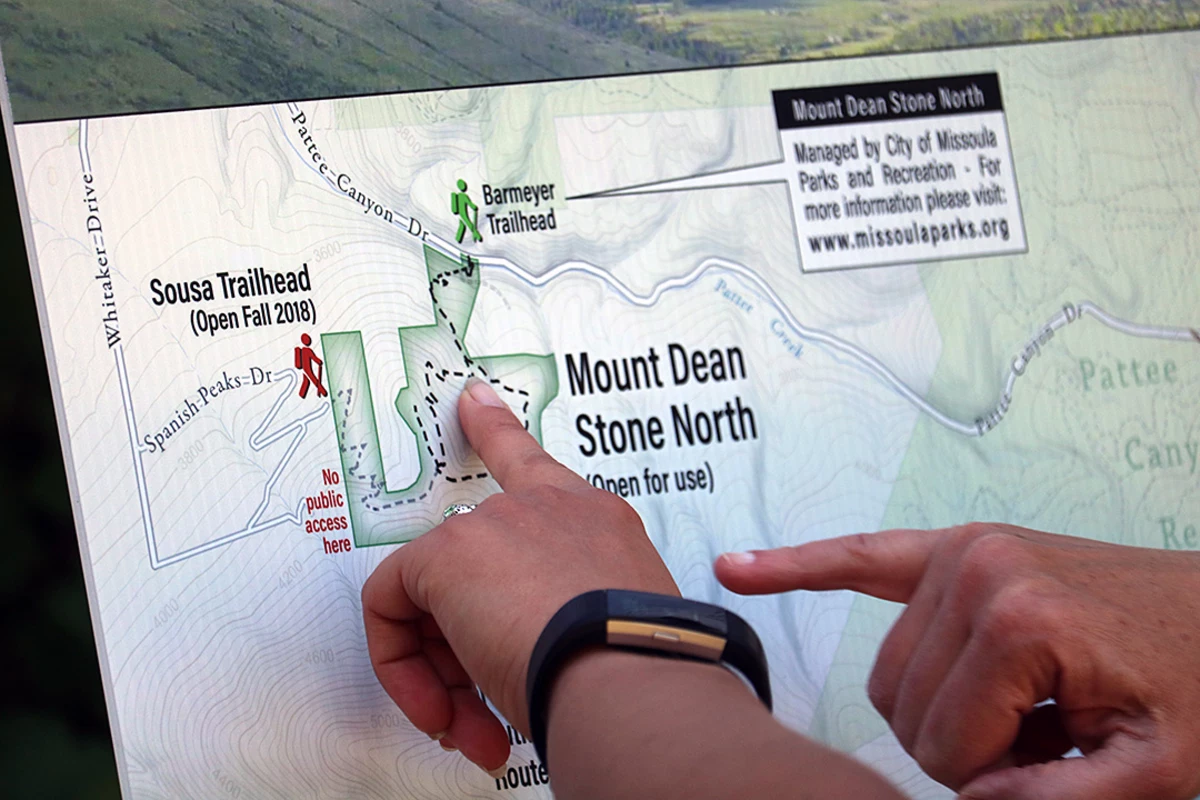WARREN, NH — The U.S. Forest Service has released a revised environmental assessment of its logging plan for 880 acres of land around Tarleton Lake, a high-altitude lake in the White Mountain National Forest, after strong local criticism. A third comment period began and the controversy escalated.
“It was disappointing,” Peter Faletra said of the revised environmental assessment. He and his wife, Elaine, live in Warren and use the lake frequently.
The lake spans the towns of Piermont and Warren. They are both members of the Lake Tarleton Coalition, a grassroots group opposed to the Forest Service plan.
“It was all or nothing, that’s what it seemed to me,” said Elaine Faletra.
As it did in the first draft assessment, the Forest Service concluded that there would be no significant impact on the “quality of the human environment,” a claim the coalition disagrees with. opposite. The Forest Service’s conclusion means it won’t pursue an “environmental impact statement,” which would typically require a thorough review of cumulative environmental consequences and a more comprehensive set of alternatives.
The mountain lake is 315 acres, earning it the distinction of being the largest of the whites. The Forest Service owns most of the land around the lake, which also houses a boys’ summer camp, three residences, a handful of seasonal camps, and two public access points. It’s one of the cleanest lakes in the state, and hundreds of people take refuge in its beauty by kayaking, hiking, swimming, and bird watching.
The Forest Service plans to harvest a total of 880 acres, but logging intensity varies. 115 acres will be clearcut, while a further 500 acres will see “cluster cuts” where one-acre sections of trees will be cut, making a total of 100 acres. “Treatments” ranging from commercial thinning to overstory removal will be applied to the remaining acres.
The project will produce approximately 5 million board feet of lumber. The production of high-quality lumber is a stated goal of the Forest Service, both nationally and with the Tarleton Lake project. A portion of the revenue from timber sales will go to local and federal coffers.
But wood is only one of the agency’s objectives; it also manages the forest for various wildlife habitats and recreational opportunities.
The Lake Tarleton Coalition had hoped for a full set of alternatives, the Faletras said. The national environmental protection law requires that an environmental assessment include alternatives, they pointed out.
Brooke Brown, the Forest Service’s Pemigewasset District Ranger, said her agency had been engaging with the public since 2019 to come up with a plan that addressed residents’ concerns. Holding three comment periods is “beyond that,” she said.
In its revised environmental assessment, the Forest Service added a section detailing “consequences of inaction.” Without active intervention, there would be a trend toward “homogeneous structure and even-aged species mixing” and a dearth of young forest habitat or wildlife openings, the Forest Service says.
The revised assessment has significant overlap with the first draft. The new version gives a brief history of the forest, much of which was heavily logged in the 1980s and 1990s. It also added a 100-foot no-cut buffer around Tarleton Lake and said herbicides may be used in spot treatments if manual pulling is not enough to eliminate an invasive species.
The plan also includes less controversial interventions, such as adding a wooded buffer around Lake Katherine, a smaller lake near Lake Tarleton.
Opponents of the project argue that the forest around Lake Tarleton deserves special protection because the community fought to save it for its spectacular natural scenery.
“White Mountain National Forest has not taken the opportunity to seriously think about it and learn from the community and learn the history of the lake,” said Zack Porter, director of Standing Trees, an organization regional non-profit. with opponents of the project.
In the early 20th century, Lake Tarleton was home to a luxury resort, now long gone. Since then, people who valued the lake for its beauty and surroundings have undone repeated efforts to develop its shores. In 2000, nonprofit organizations and individuals raised approximately $450,000 and federal entities contributed an additional $6 million to protect 5,300 acres of property around the lake in perpetuity. Some of those who donated to the cause are now members of the Lake Tarleton Coalition.
“What we don’t understand is (that) it was set aside 22 years ago and saved,” said Peter Faletra.
The Forest Service has analyzed the impact on views from public lands and roads, and has strategically placed the heaviest logging in areas that will not destroy views. But opponents of the project are equally concerned about what it will look like in the forest.
“If you’re going through a deforested area, you just don’t want to be there,” Faletra said. They argued that it would be a decade or more before anyone wanted to hike the cleared areas, and that the 100-foot buffer is not enough to protect the beauty of the trail that runs much of the perimeter of the lake. .
Brown pointed out that while the trail may be popular, it is not listed on the agency’s official trail registry. But she added that the 100-foot buffer will also help protect the trail, and logging won’t necessarily start where the buffer ends. The project leaves a 500 foot buffer around the Appalachian Trail, which also passes through the area.
While the Faletras said they understand the goal of promoting a sustainable timber industry, they disagree that logging benefits the environment.
“It’s an agricultural system. He uses the forest as a farm,” said Peter Faletra. For example, he argued that the Forest Service wanted to phase out beech because of its low timber value.
“Historically (when) humans try to manage natural ecosystems, they usually do a pretty disastrous job because ecosystems are so tangled up with so many variables that it’s really hard to predict what the unintended consequences are,” he said. -he declares.
The Faletras said they fear erosion from logging, herbicide use and driving heavy equipment through the forest could threaten the health of the lake. The lake stands out in its current state for its cleanliness and the absence, until now, of invasive aquatic species.
The area where some of the heaviest logging will take place is riddled with streams, they said. The streams feed an approximately ¾ mile bog, a rare peat-forming wetland that takes thousands of years to form. The streams drain into Eastman Creek, which in turn empties into Lake Tarleton.
The Forest Service seeks to minimize the impact, in part by limiting logging to winter when the ground is frozen. But the agency also sees active intervention, including logging, as beneficial.
For example, the Forest Service has stated ecological reasons for removing beech trees.
“Beech is widespread and a strong contender because it tolerates shade very well and often captures the entire understory of the forest in many places,” Forest Service officials explained. “Once the understory is captured by the beech, it dominates and then exceeds the upper levels of the forest canopy. While the Forest Service encourages beech in the White Mountain National Forest, it suppresses it in certain strategic areas to encourage a “better mix of tree species”. The Forest Service plans to increase aspen, birch, spruce, and fir habitat and maintain the amount of hemlock in the forest.
The Forest Service also argues that clearcuts “would produce the greatest amount of early successional habitat.”
Wildlife use different types of habitats at different life stages, officials said, for example blackberries, raspberries and wild grasses regenerate quickly after clear-cutting, providing wildlife with food and a cover not available in a more mature forest.
The Tarleton Lake debate is just one example of a larger effort to limit logging on public lands. Standing Trees is one of 70 groups, including leading environmental groups such as the Natural Resources Defense Council and the Center for Biological Diversity, that have called on the Biden administration to protect old growth forests, let forests age and to limit logging on public lands in their climate. Forest Campaign. They point to recent scientific developments that show that forests store massive amounts of carbon and continue to absorb carbon as they age. They also refer to scientific evidence that older forests, diverse in age and species, are more resistant to invasive diseases and insects.
However, some ecologists argue that proactive management, which often includes logging, is a necessary part of managing a forest for it to be healthy and a productive carbon sink.
On Earth Day last week, President Joe Biden issued an executive order aimed at protecting old-growth and mature forests and boosting reforestation. The ordinance did not prohibit logging.
The Lake Tarleton Coalition has collected over 1,300 signatures on a petition “to save Lake Tarleton”.
“It’s a perpetual thing,” Elaine Faletra said. If it’s not protected, “the next group of people will discuss this over and over and over again. It is perpetual. Logging is like a farm,” she said.
The coalition’s goal is to officially reclassify the property as a “scenic area”, a designation for areas of outstanding or unique beauty that require special management to maintain them in an “undisturbed condition”. There are nine scenic areas in White Mountain National Forest, none of them on the west side of the state.
The Forest Service will collect comments until May 11. Then he will analyze the feedback and consider whether or not to revise his plans.
White Mountain National Forest management could decide not to proceed with the project at any time, as critics have pointed out. If it continues, there remain layers of internal scrutiny and opportunities for objection.
“It’s hard to say what would happen,” Brown said.
For more information on the Forest Service plans, as well as information on how to comment, you can visit: https://www.fs.usda.gov/project/?project=56394.
Claire Potter is a member of the Report for America body. She can be reached at [email protected] or 603-727-3242.




